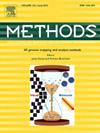Coffee – a ubiquitous substitute for uranyl acetate in staining of biological ultrathin sections for electron microscopy studies
IF 4.3
3区 生物学
Q1 BIOCHEMICAL RESEARCH METHODS
引用次数: 0
Abstract
The use of uranyl acetate, a staining agent successfully used for decades in electron microscopy of biological specimens, is now strictly regulated by law due to its toxicity and radioactivity. It is even banned in some laboratories. In the meantime, there are a number of substitutes on the market, none of which comes close to the very good staining results of uranyl acetate, or only partially, and some of which are also toxic. In this paper, two alternatives to uranyl acetate are presented, namely coffee, which is used in countless households, and pure chlorogenic acid, which is a component of coffee. We used the well-known zebrafish as biological test material, focusing on the mitochondrial membranes. The staining ability of coffee and chlorogenic acid compared with commercially available staining agents as well as uranyl acetate is assessed by the interference contrast between membranes and their environment. This work also describes how a subjective impression of good or bad contrast can be cast into an objective and comparable numerical value.
咖啡-在电子显微镜研究的生物超薄切片染色中,醋酸铀酰的普遍替代品
醋酸铀酰是一种在生物标本电子显微镜中成功使用了几十年的染色剂,由于其毒性和放射性,现在受到法律的严格管制。一些实验室甚至禁止使用。与此同时,市场上有许多替代品,没有一种接近醋酸铀酰的非常好的染色效果,或者只是部分,其中一些也是有毒的。本文介绍了醋酸铀酰的两种替代品,即在无数家庭中使用的咖啡和纯绿原酸,这是咖啡的一种成分。我们用众所周知的斑马鱼作为生物测试材料,重点研究线粒体膜。通过膜与环境的干涉对比,比较了咖啡和绿原酸与市售染色剂以及醋酸铀酰的染色能力。这项工作还描述了一个主观印象的好或坏的对比可以投射到一个客观的和可比较的数值。
本文章由计算机程序翻译,如有差异,请以英文原文为准。
求助全文
约1分钟内获得全文
求助全文
来源期刊

Methods
生物-生化研究方法
CiteScore
9.80
自引率
2.10%
发文量
222
审稿时长
11.3 weeks
期刊介绍:
Methods focuses on rapidly developing techniques in the experimental biological and medical sciences.
Each topical issue, organized by a guest editor who is an expert in the area covered, consists solely of invited quality articles by specialist authors, many of them reviews. Issues are devoted to specific technical approaches with emphasis on clear detailed descriptions of protocols that allow them to be reproduced easily. The background information provided enables researchers to understand the principles underlying the methods; other helpful sections include comparisons of alternative methods giving the advantages and disadvantages of particular methods, guidance on avoiding potential pitfalls, and suggestions for troubleshooting.
 求助内容:
求助内容: 应助结果提醒方式:
应助结果提醒方式:


